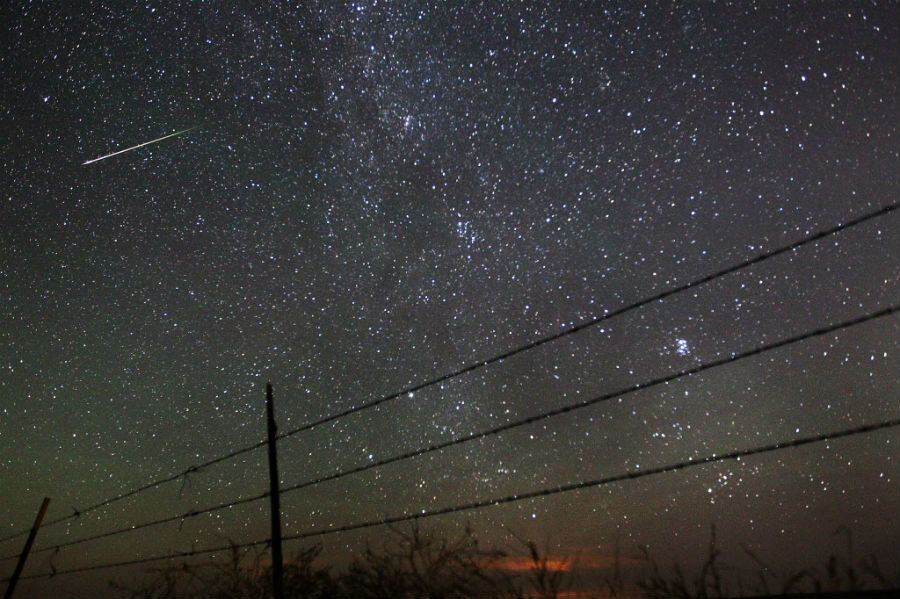Researchers discover tiniest and brightest near-earth asteroid
Loading...
For researchers from the University of Arizona, the meteoroid 2015 TC25 is a big discovery in a small package.
The tiny Near Earth Object (NEO), first observed in October 2015, is only a little more than 6 feet across. Asteroids in this size range are discovered frequently, and some even plummet to Earth. But 2015 TC25 is a little more unusual. Despite its size, it is one of the brightest NEOs ever discovered, and the researchers were able to study it in unprecedented detail as it swung to a distance of 80,000 miles from Earth, a mere third of the distance between our planet and the Moon.
Researchers hope that some of the discoveries associated with this small asteroid will give us more information about larger, potentially more dangerous NEOs. Over the past few years, scientists have increasingly made studying asteroids a priority, so that they might better protect humanity from a cataclysmic strike by a large meteor. But beyond any existential threat, studying asteroids like this one provide invaluable scientific knowledge as well, giving scientists clues about the early days of the solar system.
In a paper published by The Astronomical Journal, the researchers describe 2015 TC25 as an aubrite, a rare type of igneous asteroid known for its high concentration of silicates. These objects are formed at very high temperatures in a basaltic environment, and are known for being especially bright in the night sky because of the reflective nature of the silicates that compose them. 2015 TC25 reflects about 60 percent of the light from the sun that hits it, making it far brighter than one would expect of a meteoroid its size. By comparison, our moon reflects, at most, 12 percent of the sunlight that strikes it.
"If we can discover and characterize asteroids and meteoroids this small, then we can understand the population of objects from which they originate: large asteroids, which have a much smaller likelihood of impacting Earth," Vishnu Reddy, an assistant professor at the University of Arizona's Lunar and Planetary Laboratory and leader of the study, said in a statement. "In the case of 2015 TC25, the likelihood of impacting Earth is fairly small."
As a general rule, the larger the asteroid, the less likely it is to impact Earth. But with more than 15,000 NEOs discovered to date, scientists have begun to make it a priority to prepare for a potentially catastrophic asteroid on a collision course. By studying and understanding smaller asteroids, researchers hope to be able to better react to larger impacts in the form of early warning systems, evacuation plans, and even deflecting asteroids headed towards Earth.
For now, however, researchers are content to study the much less-dangerous 2015 TC25.
"This is the first time we have optical, infrared and radar data on such a small asteroid, which is essentially a meteoroid," Dr. Reddy said in the statement. "You can think of it as a meteorite floating in space that hasn't hit the atmosphere and made it to the ground — yet."
While it is unlikely that 2015 TC25 will ever hit Earth, it is in the same size range as many meteors that have come crashing down to Earth in the past. But while scientists have studied plenty of examples of meteorites that have hit the planet in this size range, this is the first time researchers have been able to get a close look at one that was still in orbit, unaffected by the trauma of burning through Earth's atmosphere.
"Being able to observe small asteroids like this one is like looking at samples in space before they hit the atmosphere and make it to the ground," Reddy said in the statement. "It also gives us a first look at their surfaces in pristine condition before they fall through the atmosphere."
Reddy believes that 2015 TC25 was chipped off of 44 Nysa, an asteroid nearly the size of Los Angeles. The impact may have caused the small meteoroid to spin quickly, completing a rotation every two minutes, one of the fastest observed in a NEO. 2015 TC25 is also unusual in that it may have no regolith, a dust blanket found on larger asteroids, as well as the moon.








